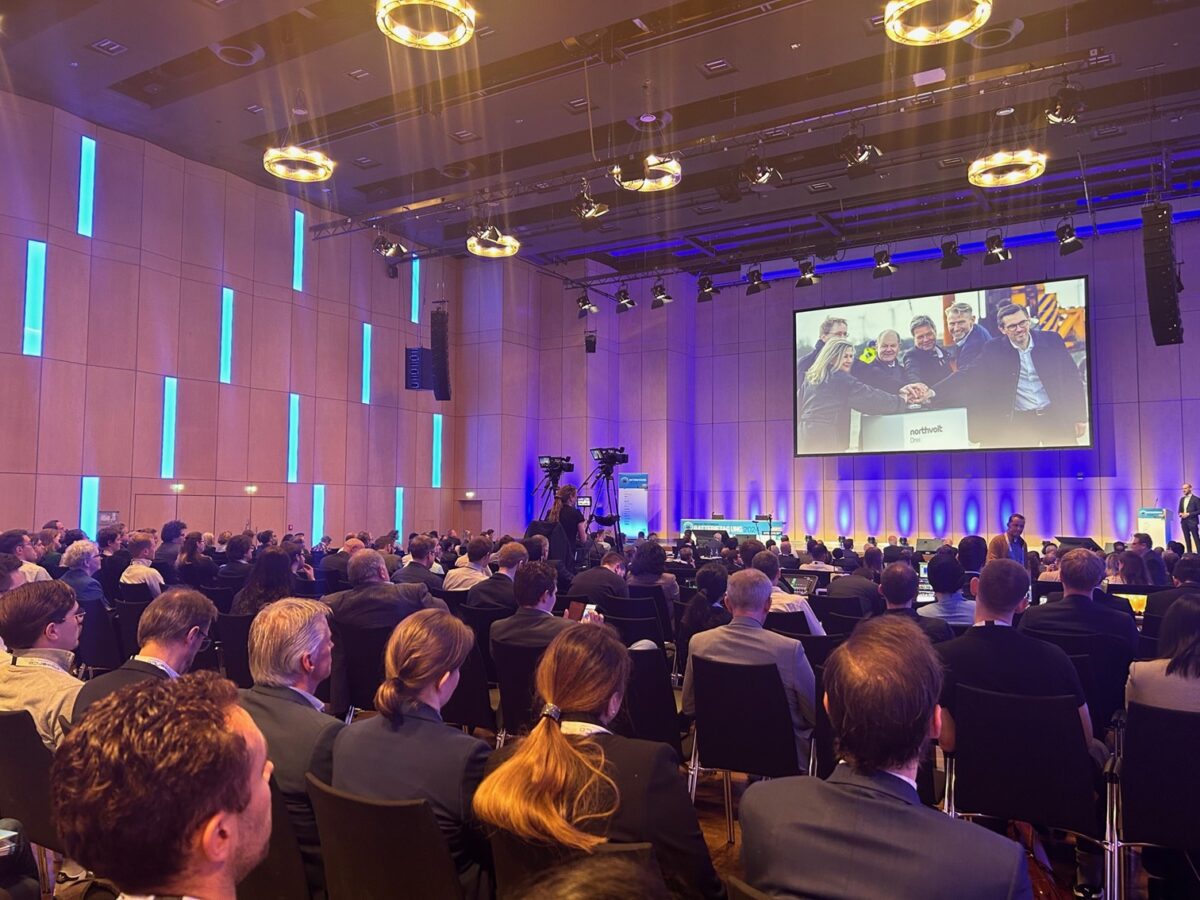The German government is sharply cutting support for battery research and the market introduction of electric vehicles, but the Advanced Battery Power conference – held from April 10 to April 11 in the city of Munster – shows that battery tech know-how has never been higher.
The conference brought together industry representatives from companies such as Audi, Mercedes-Benz, PowerCo, and Northvolt, with strong participation from scientists, which was underscored by the 350-plus submitted research posters that were on display in the lobby of the conference center.
Some of the key topics included battery diagnostics, aging, and safety, as well as lifecycle assessments for lithium-ion batteries. Scientists presented the latest findings on lithium plating, which occurs when lithium ions form metal deposits in battery cells, eventually leading to internal short circuits and dangerous thermal runaway. Participating researchers also shared the latest insights into lithium-ion battery calendar and cycle life, while noting that not all battery aging processes are fully understood.
Lithium-ion battery recycling was discussed as one of the open issues in the technology’s process development. The new EU Battery Regulation sets ambitious recycling targets, including 50% lithium recovery by the end of 2027 and 80% by the end of 2030, but there is still a lot of work to do on standardization, automation, and improved recovery yields.
While copper, cobalt and nickel can be successfully recovered, the recovery yields of lithium and graphite need to be further improved. In addition, many of today’s battery recycling processes involve fully manual discharge and dismantling, due to different battery chemistries and system designs.
Other key issues include the treatment of damaged cells due to high safety risks. In his address, Bernd Friedrich, chair of process metallurgy and metal recycling at RWTH Aachen University, also noted the range of new chemistries entering the market, which could further complicate recycling procedures, with little to no value to recycle.
The conference included an in-depth discussion about the future beyond lithium batteries, suggesting that the main battle in stationary storage applications will be waged between sodium-ion and lithium iron phosphate (LFP) chemistries. Other than sodium-ion, the most market-ready, beyond-lithium technology, the conference speakers also discussed the potential of calcium, magnesium and zinc batteries.
Running parallel to Advanced Battery Power, the vehicle-to-grid (V2G) conference offered prime input on the latest developments in the V2G, vehicle-to-home (V2H), and smart charging (V1G) space from various perspectives, including those of original equipment manufacturers (OEMs), charging infrastructure providers, and project developers.
V2X tech is slowly entering the market, with the first deployments only supporting selected hardware, which means closed ecosystems. Interoperability and communication therefore remain the key obstacles facing bidirectionality, including struggles in ISO 15118 standardization. Local regulatory frameworks, such as inadequate metering concepts or a lack of dynamic tariffs, are another pronounced obstacle.
Popular content
With the market still at an early stage, players are becoming increasingly active. Some OEMs, such as Renault Group, are also announcing comprehensive bidirectional offerings. The conference participants broadly agreed that V2H is likely to precede V2G applications at scale, given that the bidirectional ecosystem can be installed behind the meter – free from issues related to billing or taxation.
As a result, V2H is expect to gain ground in the next couple of years, while V2G is expected to materialize further down the line. Some participants even voiced expectations that by 2035, all vehicles will be bidi capable. Initial V2G fleets are already operational, such as one involving 400 station-based, MyWheels electric shared cars that are connected to We Drive Solar charging stations in the Dutch city of Utrecht.
End customers remain reluctant to explore the potential of V2X, mainly due to concerns about electric-vehicle battery health. But a presentation by Dirk Uwe Sauer, chair of electrochemical energy conversion and storage systems at RWTH Aachen, dispelled such concerns. Sauer said that EV batteries deliver much more energy than necessary for vehicle operation, and argued that V2X could actually prolong battery life, rather than shortening it, ensuring an optimal state of charge.
The conference participants also highlighted big differences across different geographies, as some countries are still even struggling with hurdles for smart charging. Other jurisdictions, meanwhile, are actively working to resolve a number of V2X-related issues, such as concerns about double taxation in Switzerland.
The next edition of the Advanced Battery Power conference will take place at Eurogress Aachen, from April 2 to April 3, 2025.
This content is protected by copyright and may not be reused. If you want to cooperate with us and would like to reuse some of our content, please contact: editors@pv-magazine.com.



By submitting this form you agree to pv magazine using your data for the purposes of publishing your comment.
Your personal data will only be disclosed or otherwise transmitted to third parties for the purposes of spam filtering or if this is necessary for technical maintenance of the website. Any other transfer to third parties will not take place unless this is justified on the basis of applicable data protection regulations or if pv magazine is legally obliged to do so.
You may revoke this consent at any time with effect for the future, in which case your personal data will be deleted immediately. Otherwise, your data will be deleted if pv magazine has processed your request or the purpose of data storage is fulfilled.
Further information on data privacy can be found in our Data Protection Policy.